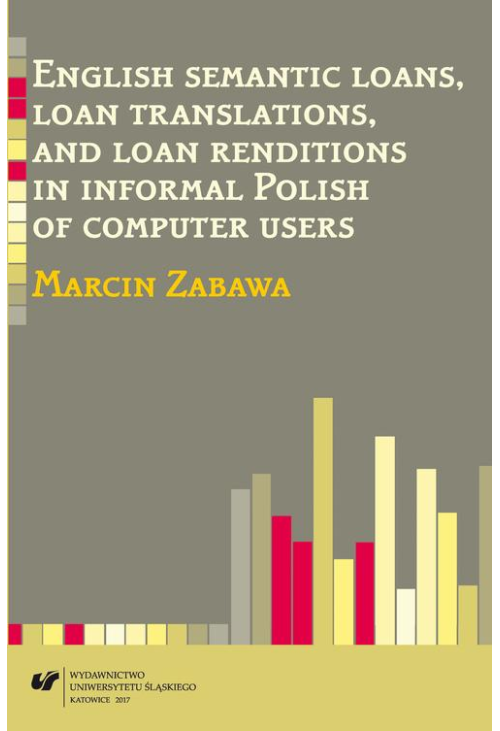
- -11%
ebook English semantic loans, loan translations, and loan renditions in informal Polish of computer users
Odkryj fascynujący świat angielskich zapożyczeń semantycznych i kalk leksykalnych w potocznej polszczyźnie informatyki dzięki monografii English semantic loans, loan translations, and loan renditions in informal Polish of computer users autorstwa Marcina Zabawy. Ta wyczerpująca praca naukowa, wydana przez Wydawnictwo Uniwersytetu Śląskiego w 2017 roku, stanowi cenne źródło informacji dla badaczy i miłośników języka informatycznego.
Książka elektroniczna, dostępna w formacie PDF, jest szczegółowym opracowaniem ponad 200 zapożyczeń semantycznych oraz ponad 500 kalk z dziedziny informatyki. Bazując na imponującym korpusie tekstów zebranych przez autora, obejmującym półtora miliona słów z wybranych forów internetowych, monografia ta oferuje głęboki wgląd w złożoność współczesnego języka informatycznego.
Monografia Zabawy nie tylko analizuje materiał badawczy, ale również dostarcza obszerne omówienie teoretyczne problematyki zapożyczeń semantycznych i kalk. Ponadto, szczegółowo opisuje proces budowy korpusu językowego, co czyni ją nieocenionym narzędziem dla badaczy planujących własne projekty badawcze.
Ta unikalna publikacja cyfrowa jest adresowana do szerokiego grona odbiorców, w tym do specjalistów zajmujących się kontaktem językowym, zapożyczeniami oraz językiem informatyki i Internetu. Może ona również zainteresować tłumaczy tekstów informatycznych oraz wszystkich tych, którzy chcą lepiej zrozumieć współczesny język informatyki, zwłaszcza w jego mniej oficjalnej odmianie.
Zanurz się w bogactwie angielskich zapożyczeń semantycznych i kalk leksykalnych w potocznej polszczyźnie informatyki, pobierając tę niezwykłą publikację cyfrową ze sklepu z ebookami. Zamów ebook, czytaj wygodnie na dowolnym urządzeniu i odkrywaj najlepsze ebooki, które pomogą Ci pogłębić wiedzę o języku informatycznym!
Spis treści ebooka English semantic loans, loan translations, and loan renditions in informal Polish of computer users
Table of contentsIntroduction / 9
Chapter1: Electronic varieties: Internet communication and Internet forums / 13
1.1 Introduction / 13
1.2 Language variation: Register, dialect, sociolect, genre, and style / 14
1.2.1 Definitions of the terms / 14
1.2.2 Components of register description / 16
1.3 The notion of Internet language and Internet communication / 18
1.3.1 Types of Internet communication / 18
1.3.2 General features of Internet language / 19
1.3.3 Linguistic features of Internet communication / 22
1.4 Situational description of Internet forums / 25
1.5 Concluding comments / 28
Chapter 2: Semantic loans, loan translations, and loan renditions: Theoretical considerations / 29
2.1 Introduction / 29
2.2 Semantic loans: Theoretical aspects / 30
2.2.1 Introductory comments /30
2.2.2 Semantic loans and semantic neologisms: Definitions and general characteristics / 30
2.2.3 Semantic loans: Examples of terminological confusion / 35
2.2.4 Semantic loans: Types of semantic change according to the direction of the semantic modification / 37
2.2.5 Semantic loans: Types of semantic change according to the element Affected / 39
2.2.6 The influence of semantic loans on the existing system / 40
2.3 Loan translations: Theoretical aspects / 42
2.3.1 Introductory comments / 42
2.3.2 Loan translations: Definitions / 43
2.3.3 Loan translations: Classification / 45
2.4 Problems connected with the identification of semantic loans and loan Translations / 50
2.4.1 Introductory comments / 50
2.4.2 Distinguishing between semantic loans and native semantic innovations / 51
2.4.3 Distinguishing between semantic loans and lexical re-borrowings / 54
2.4.4 Distinguishing between loan translations and native phrasal innovations / 56
2.4.5 Distinguishing between semantic loans and loan translations / 59
2.4.6 Distinguishing between loan translations and loan renditions / 63
2.4.7 The status of loan creations / 66
2.4.8 Distinguishing between loanblends (semi-calques) and hybrids /67
2.4.9 Distinguishing between loan translations or loanblends and lexical borrowings / 69
2.5 The emergence of semantic loans and loan translations / 70
2.6 The reasons for introducing semantic loans and loan translations / 73
2.7 Normative assessment of semantic loans and loan translations / 77
2.8 English semantic loans and loan translations in Polish / 80
2.8.1 General observations / 80
2.8.2 English semantic loans and loan translations in Polish: Literature review / 82
2.9 English semantic loans and loan translations in the Polish language of computer science / 88
2.9.1 Introductory remarks / 88
2.9.2 Metaphorical innovations in the English language of computer science /88
2.9.3 Brief discussion on English semantic loans and loan translations in the Polish language of computer science / 91
2.10 Concluding remarks / 95
Chap t e r 3: The corpus of informal Polish of computer users: General description / 97
3.1 Introduction / 97
3.2 Priority of Internet texts / 98
3.3 Definition and types of corpora / 103
3.4 The description of the present corpus / 107
3.4.1 General information / 107
3.4.2 Corpus compilation / 109
3.4.3 The size / 110
3.4.4 The structure of the corpus / 110
3.4.5 The respondents / 111
3.4.6 The status of the language of the corpus / 112
3.4.7 The level of formality of the texts / 114
3.5 Research questions / 116
3.6 Concluding comments / 117
Chapter 4: The analysis of semantic loans and loan translations found in the corpus / 119
4.1 Introduction / 119
4.2 The methodology / 119
4.3 Problems connected with corpus analysis / 121
4.4 The format of the description / 124
4.5 The analysis of semantic loans and loan translations / 128
4.5.1 Introductory remarks / 128
4.5.2 Single-word loan translations and loan renditions / 129
4.5.3 Loan translations and loan renditions not connected with a semantic loan / 130
4.5.4 Semantic loans with or without simultaneous loan translations and renditions / 136
4.6 Concluding comments / 266
Chapter 5: Conclusions / 267
5.1 Introduction / 267
5.2 Semantic loans found in the corpus: Statistical analysis / 267
5.3 L oan translations and renditions found in the corpus: Statistical analysis / 281
5.4 C oncluding comments / 285
Appendix 1: Internet forums included in the corpus / 287
Appendix 2: Semantic loans, loan translations, and loan renditions in context / 291
Appendix 3: Semantic borrowings found in the corpus / 321
Bibliography / 327
Index of names / 357
Subject index / 363
Streszczenie / 367
Zusammenfassung / 369
Szczegóły ebooka English semantic loans, loan translations, and loan renditions in informal Polish of computer users
- Wydawca:
- Wydawnictwo Uniwersytetu Śląskiego
- Rok wydania:
- 2017
- Typ publikacji:
- Ebook
- Język:
- angielski
- Format:
- Liczba stron:
- 374
- Miejsce wydania:
- Katowice
Recenzje ebooka English semantic loans, loan translations, and loan renditions in informal Polish of computer users
-
Reviews (0)

Na jakich urządzeniach mogę czytać ebooki?
- -11%





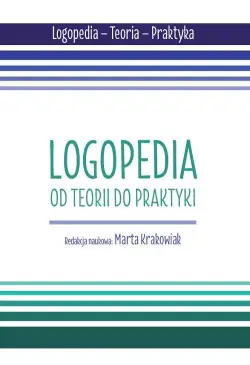
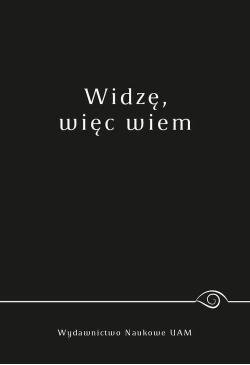

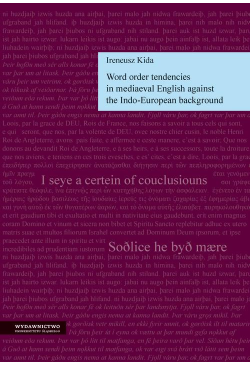
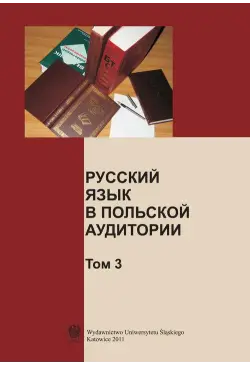
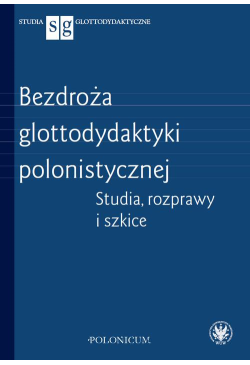
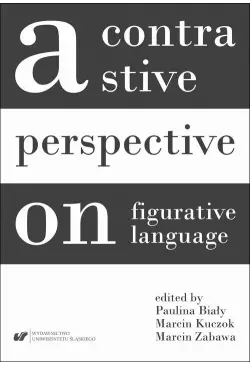

@CUSTOMER_NAME@
@COMMENT_TITLE@
@COMMENT_COMMENT@